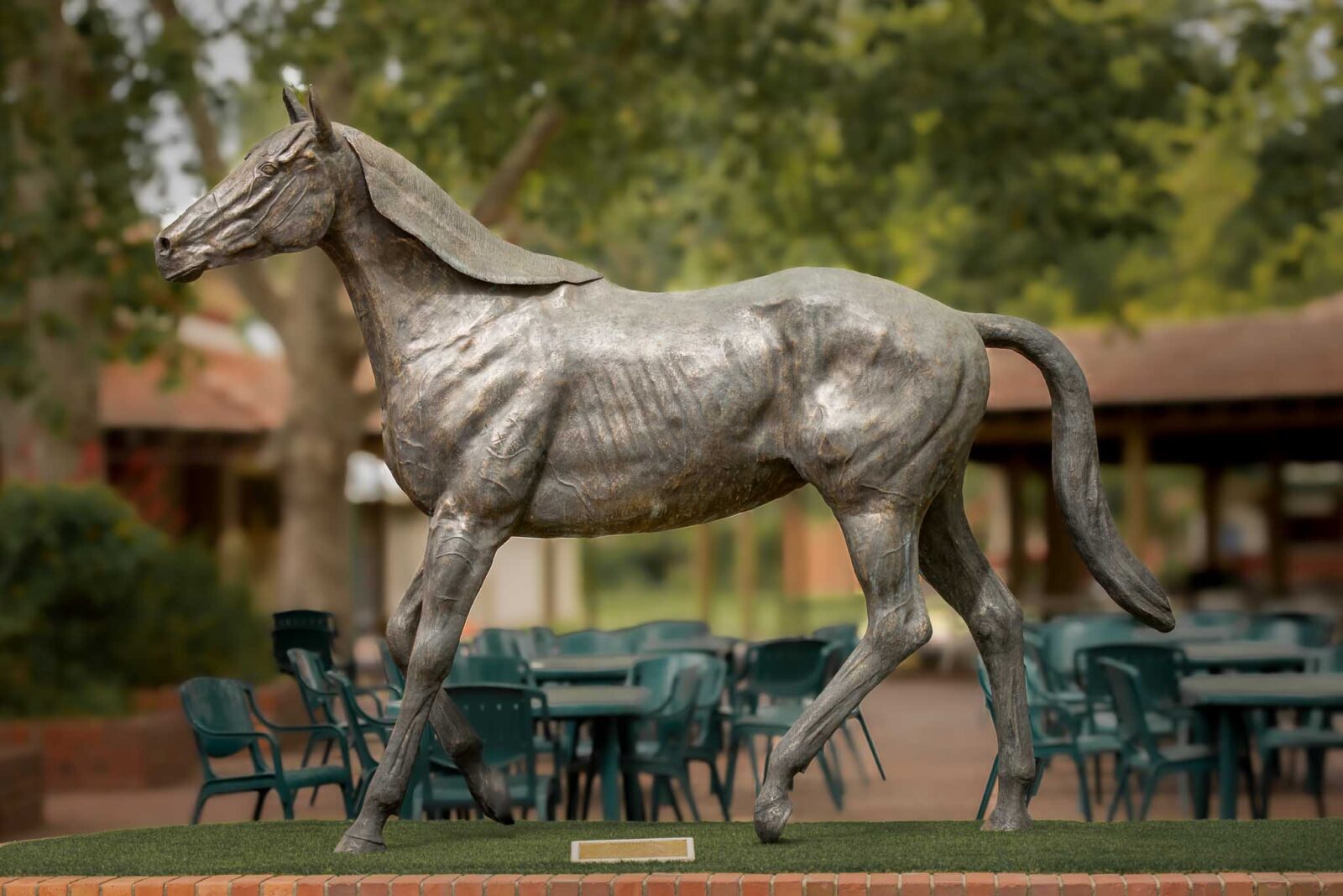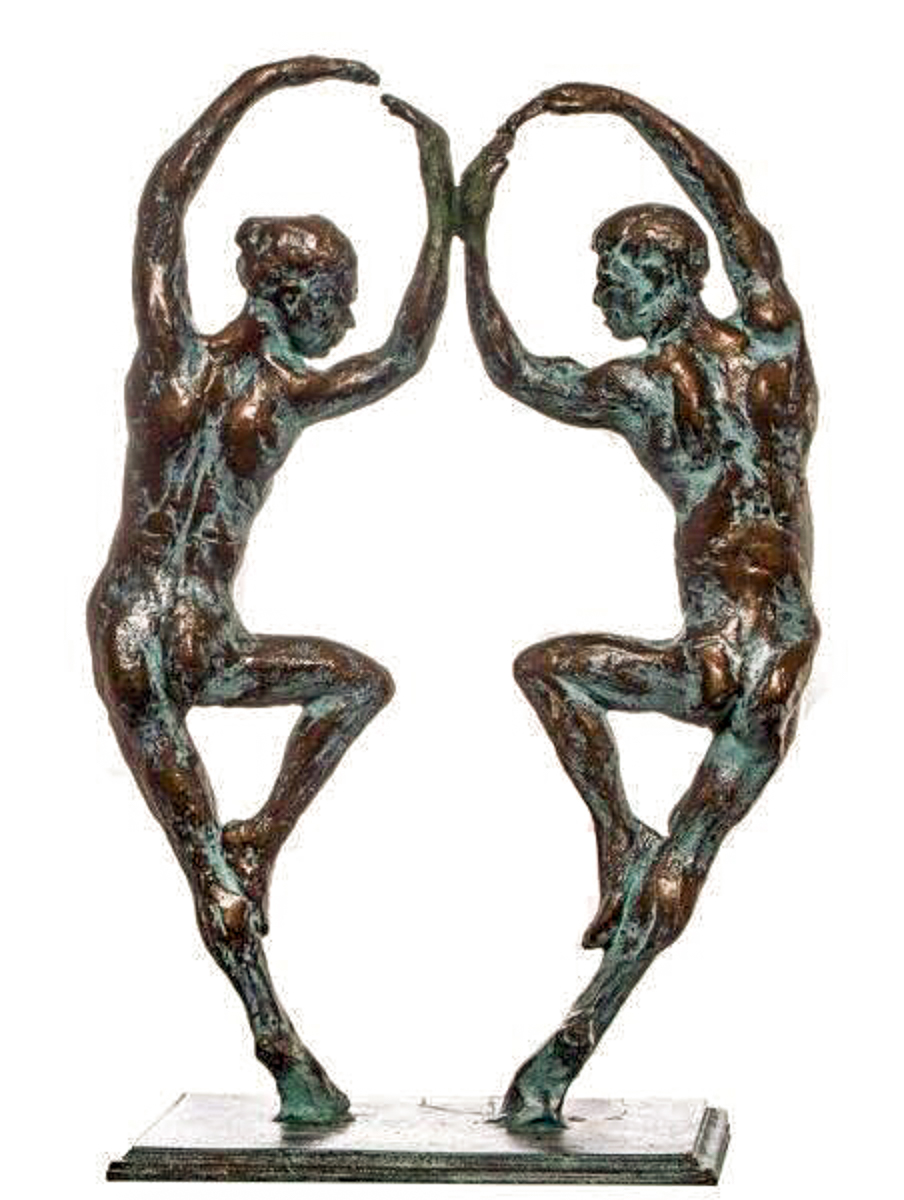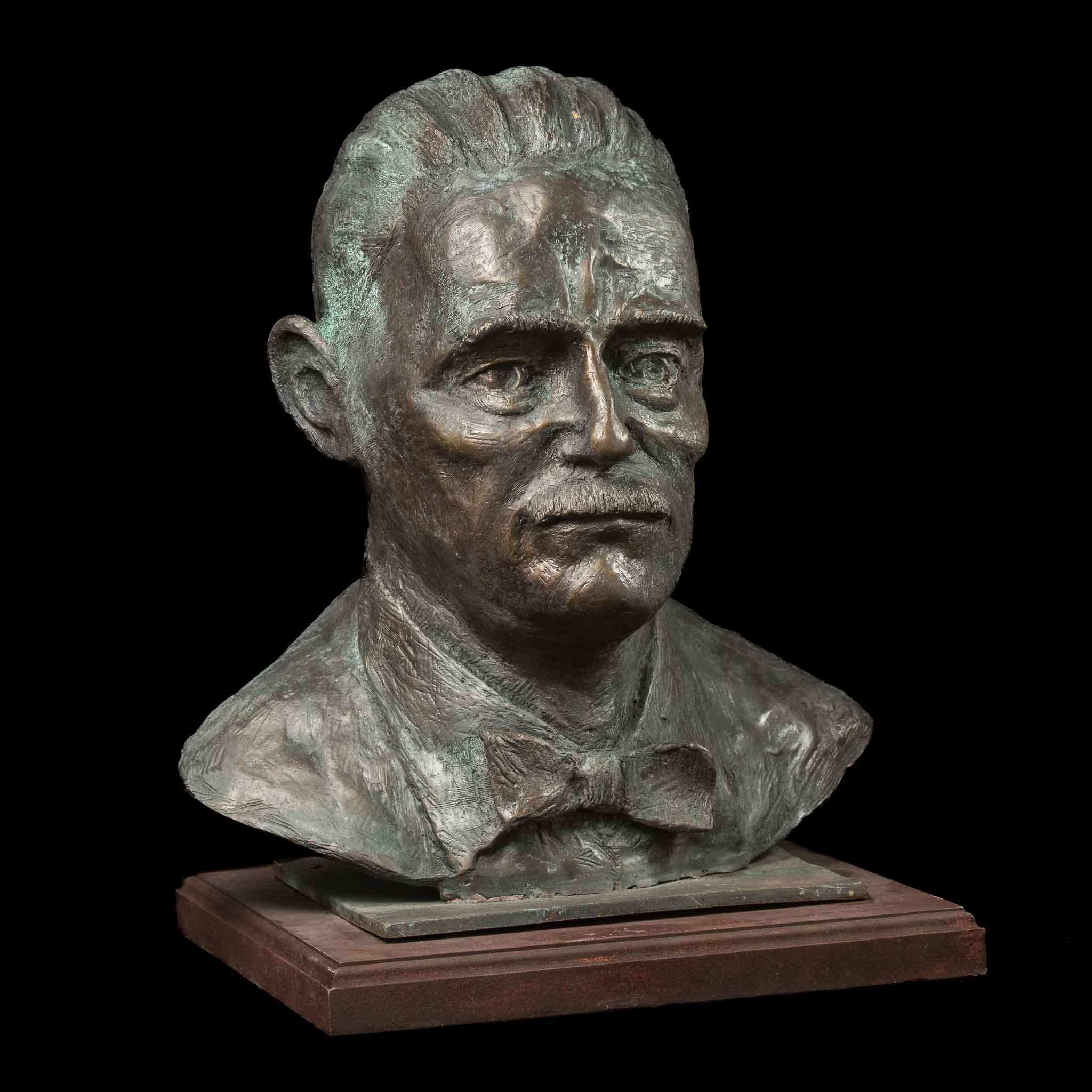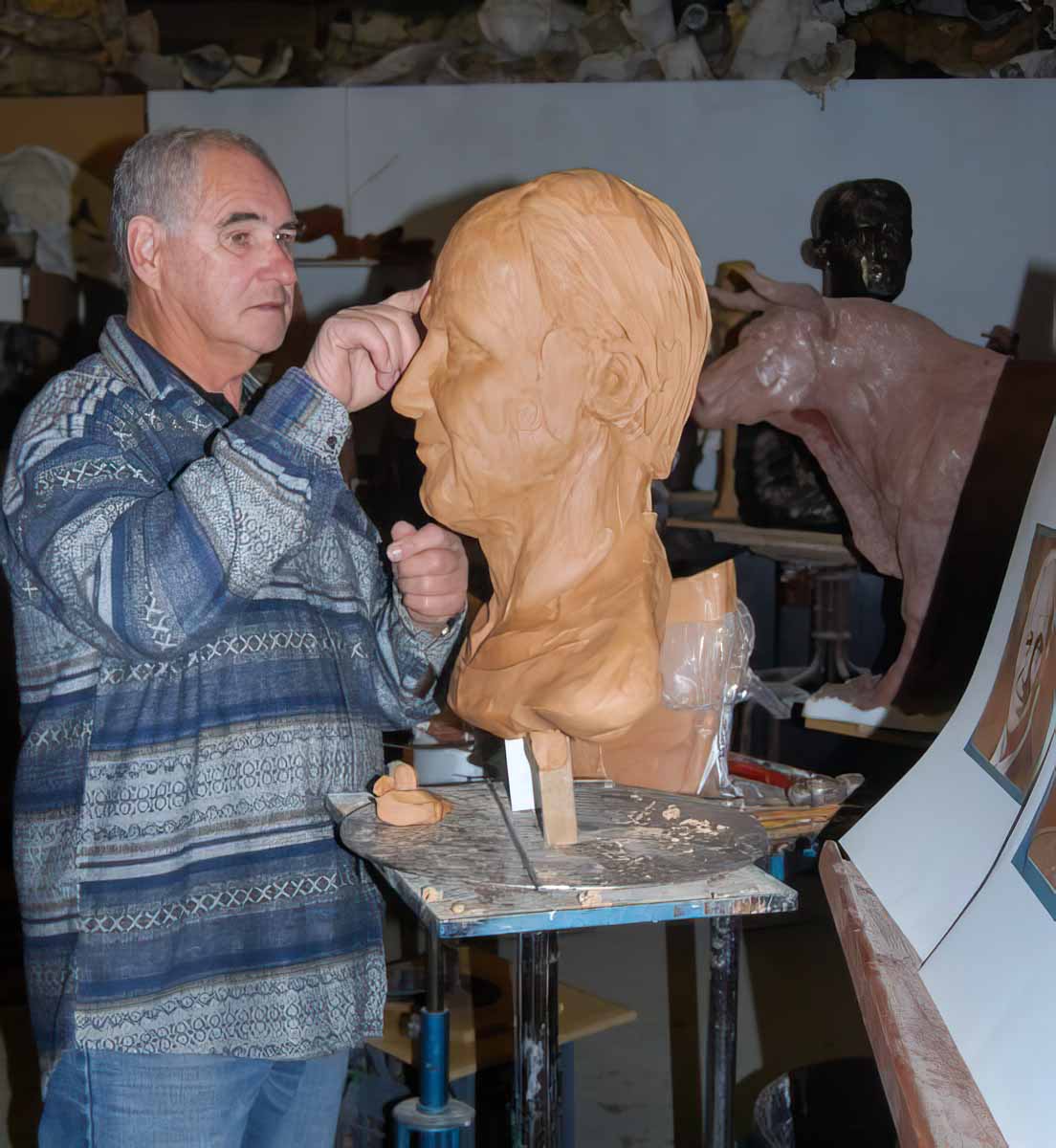Commission Bronze Sculptures with Artistic, Cultural, and Historical Merit.
Robert C Hitchcock has a multi-decade history of
creating collectable and iconic sculptures for
Government, Commercial, Historical, Public and Private Clients.
Perth and Melbourne
Independent Sculptor – Bronze Portrait Busts, Equine, & Life-Sized Commissions
Robert Charles Hitchcock (born 18 August 1944) is a West Australian sculptor. He commenced his career in 1970 and works in a wide variety of subjects and materials.
Robert Hitchcock is one of the leading Australian portrait sculptors working in Australia today. He is known for his life-size and over-life-size bronze sculptures which are located in public and private collections in Australia and overseas.
Born in Perth, Western Australia, Robert is of Irish and indigenous Australian descent. In his youth, he worked as a carpenter and entered formal artistic study in his early twenties at the Department of Art, Perth Tech College, James Street, Western Australia.



Discovery of Sculpture – Realism and Expressionism
As an art student, studying fine art painting, the practical work was impacted by his impaired vision, which he had had since the age of 11; he was monocular and his seeing eye gave only blurred images. Difficulty mixing colours and recreating perspective were the result. Discovering sculpture was a revelation and he taught himself to work using profile as opposed to three-dimensional vision. Shadows and light were more important than colour.
The early sculptures of Hitchcock were exploratory in nature and diverse in technique and style. Subject matter tended towards realism and expressionism of the continuity and movement of form in space and the subjects themselves include natural forms and realistic modelling of animals and figures in movement.
Presently he is pursuing an abstract form of the anatomy of humans and animals, reconstructing and defining, distorting the anatomical representation and energy into a more expressive form of sculptural design.
Hitchcock later moved away from this early realism to a more stylised and abstract search of forms and planes. After graduating in 1969 he worked in plaster factories, fibreglass factories and various bronze foundries. The result was a knowledge base of all things sculpture, allowing Hitchcock to undertake all forms of sculpture practice.
If you are interested in a sculptor commission contact Robert C Hitchcock on Ph: 0414 476 406 or fill out the enquiry form.


FAQ – Frequently Asked Questions Regarding Bronze Sculptures
What are bronze sculptures and what is bronze made of?
Bronze sculptures are artworks created by shaping and molding bronze metal into three-dimensional forms, such as statues, busts, and figurines. Bronze is an alloy composed mainly of copper (~88%) and tin (~12%) and is widely used and treasured for creating sculptures due to its durability, malleability, and ability to capture intricate details.
How are bronze sculptures made?
Bronze sculptures are typically made using the lost-wax casting method, where a wax model is encased in a mold, melted away, and replaced with molten bronze. This allows for intricate details and impressive lifelike features.
What makes bronze a popular material for sculpture?
Bronze is favored for sculpting due to its durability, malleability, and unique ability to capture fine details, making it an ideal medium for creating expressive and dynamic sculptures.
Can bronze sculptures be customized to specific requirements?
Yes, many of Robert C Hitchcock’s bronze sculptures are unique and are limited edition or specifically commissioned for clients, such as historical figures, life-sized public works, horses or other animals, or custom designs, tailored to individual preferences and needs.
Are bronze sculptures suitable for outdoor display?
Bronze sculptures are highly resistant to weather and corrosion, making them suitable for outdoor settings, where they can withstand the elements while retaining their beauty.
What is “cold cast bronze”?
Cold cast bronze refers to a process in which a sculpture or object is produced by mixing bronze powder with a binding material, such as polymer resin, to create realistic bronze-like finishes in sculpture, statuary, and decorative objects.
